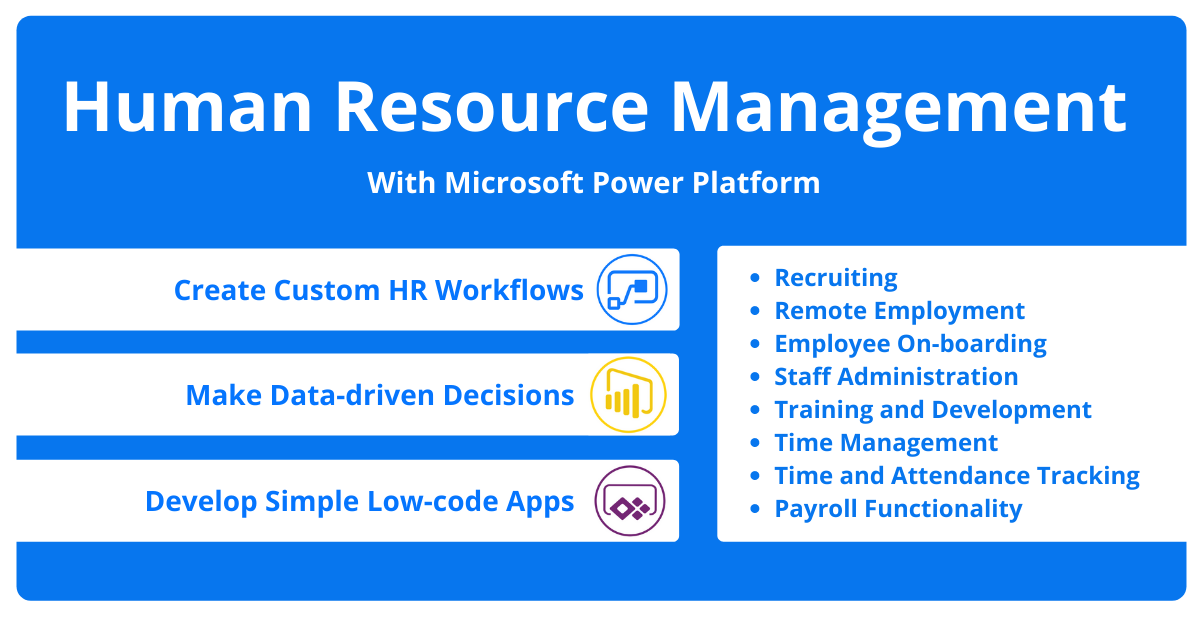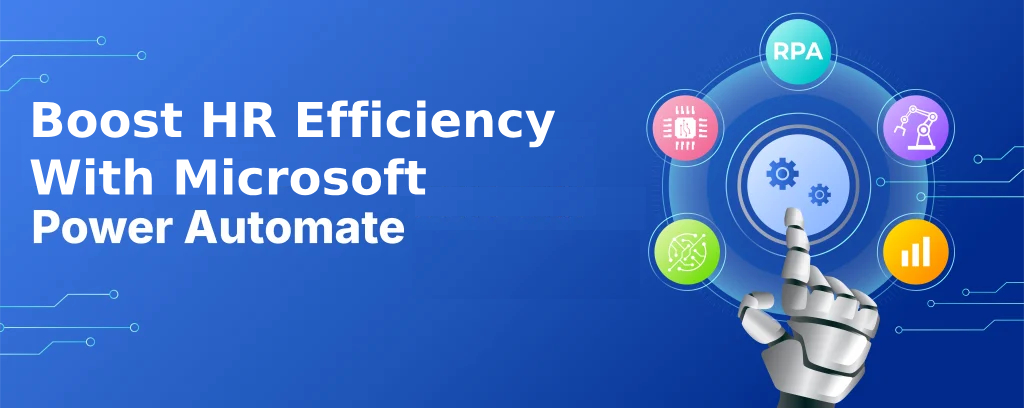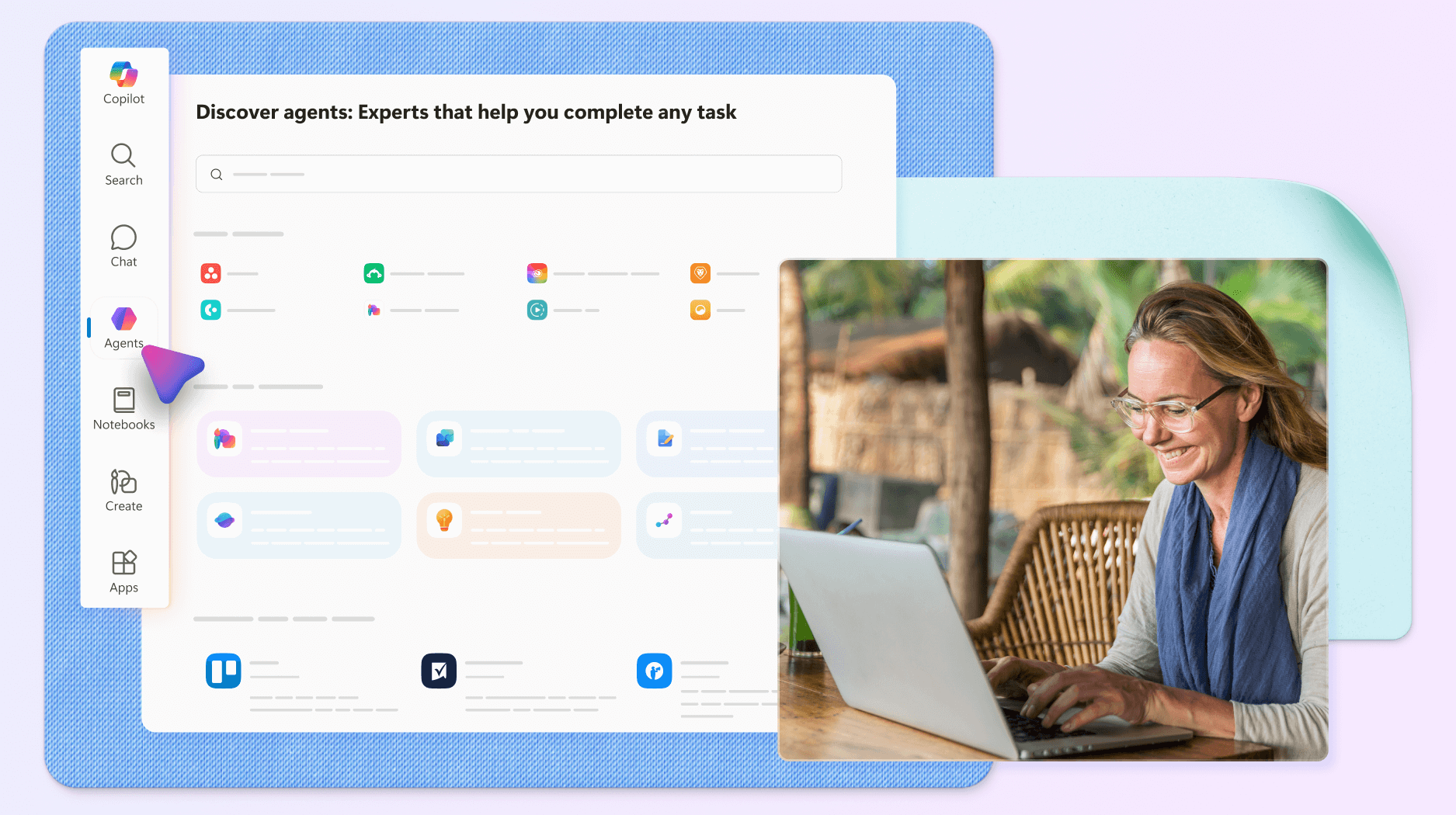Revolutionizing HR Operations: Power Platform Solutions for Workforce Management

The human resources landscape has undergone a seismic shift in recent years, demanding solutions that can adapt to hybrid workforces, complex compliance requirements, and the need for data-driven decision making. Microsoft Power Platform emerges as the definitive low-code solution for HR transformation, offering unprecedented capabilities to streamline operations, enhance employee experiences, and drive organizational efficiency.
The Strategic Imperative: Why Power Platform Dominates HR Technology
Market Positioning and Competitive Advantage
Power Platform's integration with Microsoft 365 and Azure creates an ecosystem advantage that traditional HR solutions cannot match. With over 300 million commercial users already in the Microsoft ecosystem, the platform reduces friction in adoption while leveraging existing security protocols and data governance frameworks.
Key differentiators include:
- Native integration with Teams, SharePoint, and Office 365
- Advanced AI capabilities through AI Builder and Copilot
- Robust compliance features meeting GDPR, HIPAA, and SOX requirements
- Scalable architecture supporting enterprise-grade deployments

Total Cost of Ownership Analysis
Traditional HR systems often require significant upfront investments, lengthy implementation cycles, and ongoing maintenance costs. Power Platform's subscription-based model with per-user licensing creates predictable cost structures while enabling rapid deployment and iteration.
Financial benefits:
- 60-80% reduction in development time compared to traditional coding
- Elimination of infrastructure costs through cloud-native architecture
- Reduced dependency on specialized IT resources
- Faster time-to-value with iterative development approaches
Core HR Applications: Technical Implementation Strategies
1. Employee Onboarding Automation
Power Apps Canvas Application:
// Key connector integrations
- Azure Active Directory (identity management)
- SharePoint (document management)
- Power Automate (workflow orchestration)
- Microsoft Teams (communication hub)
The onboarding application leverages Power Apps' responsive design capabilities to create personalized experiences across devices. Integration with Power Automate enables sophisticated workflow orchestration, including conditional logic for role-based provisioning, automated compliance checks, and escalation procedures.
Advanced features:
- Dynamic form generation based on employee type and department
- Integration with DocuSign for digital signature workflows
- Automated provisioning of system access through Graph API
- Real-time progress tracking with Power BI dashboards

2. Performance Management System
Power Apps Model-Driven Application: The performance management solution utilizes Common Data Service (now Dataverse) to create a comprehensive data model supporting complex relationships between employees, managers, goals, and performance metrics.
Technical architecture:
- Custom entities for goals, reviews, and competencies
- Business process flows for structured review cycles
- Power BI embedded analytics for performance insights
- Integration with LinkedIn Learning for skill development
Advanced capabilities:
- 360-degree feedback collection with automated anonymization
- AI-powered sentiment analysis of feedback comments
- Predictive analytics for employee retention risk
- Automated calibration workflows for performance distributions
3. Leave Management and Absence Tracking
Power Automate Premium Workflows: The leave management system demonstrates Power Platform's ability to handle complex business rules and approval hierarchies while maintaining compliance with various jurisdictional requirements.
Workflow complexity:
- Multi-level approval routing based on leave type and duration
- Integration with Outlook calendar for conflict detection
- Automated accrual calculations with carryover rules
- Compliance reporting for statutory leave requirements
Advanced Automation Scenarios
Intelligent Document Processing
Power Platform's AI Builder capabilities enable sophisticated document processing workflows that transform traditional HR operations:
Use cases:
- Resume parsing and candidate scoring
- Contract analysis and clause extraction
- Expense report processing and validation
- Benefits enrollment form digitization
Technical implementation:
- Custom AI models trained on organization-specific documents
- Integration with Azure Cognitive Services for advanced OCR
- Power Automate flows for exception handling and human-in-the-loop processes
- Dataverse storage with full audit trails
Employee Experience Automation
Microsoft Teams Integration: The convergence of Power Platform with Teams creates opportunities for embedded HR experiences within the flow of work:
- Adaptive cards for approval notifications
- Chatbots for HR policy queries and basic transactions
- Scheduled reports delivered through Teams channels
- Integration with Viva suite for employee engagement
Power BI: Analytics and Insights Strategy
Executive Dashboard Development
Power BI's advanced visualization capabilities enable HR leaders to transform data into actionable insights:
Key metrics and KPIs:
- Employee turnover analysis with predictive modeling
- Recruitment funnel optimization
- Performance distribution and calibration analytics
- Diversity and inclusion tracking
- Compensation equity analysis
Technical considerations:
- Row-level security for sensitive HR data
- Real-time streaming for time-sensitive metrics
- Integration with external data sources (ATS, payroll systems)
- Mobile-optimized dashboards for executive consumption
Predictive Analytics Implementation
AI and Machine Learning Integration: Power BI's integration with Azure Machine Learning enables sophisticated predictive analytics:
- Employee attrition risk modeling
- Performance trajectory prediction
- Optimal team composition analysis
- Succession planning recommendations
Security and Compliance Framework
Data Governance Strategy
Power Platform's enterprise-grade security model addresses critical HR data protection requirements:
Security layers:
- Azure Active Directory integration for identity management
- Data Loss Prevention (DLP) policies for sensitive data
- Center of Excellence (CoE) toolkit for governance
- Audit logging and compliance reporting
Compliance capabilities:
- GDPR data subject rights automation
- SOX-compliant approval workflows
- HIPAA-compliant health data handling
- Regional data residency requirements
Implementation Best Practices and Success Patterns
Center of Excellence Development
Successful Power Platform HR implementations require structured governance and support models:
CoE components:
- Standardized templates and accelerators
- Governance policies and approval processes
- Training and certification programs
- Performance monitoring and optimization
Change Management Strategy
User adoption framework:
- Executive sponsorship and communication
- Phased rollout with pilot programs
- Comprehensive training and support
- Continuous feedback and improvement cycles
ROI and Business Case Development
Quantifiable Benefits
Power Platform HR solutions deliver measurable returns through multiple vectors:
Operational efficiency gains:
- 70% reduction in manual processing time
- 50% improvement in approval cycle times
- 90% reduction in paper-based processes
- 60% decrease in IT support tickets
Strategic value creation:
- Enhanced employee experience and satisfaction
- Improved compliance and risk management
- Data-driven decision making capabilities
- Accelerated digital transformation initiatives
Investment Considerations
Licensing optimization:
- Per-user vs. per-app licensing strategies
- Premium connector requirements
- AI Builder credit allocation
- Power BI Pro vs. Premium capacity planning
Future-Proofing HR Technology
Emerging Capabilities
Power Platform's roadmap includes several capabilities that will further enhance HR solutions:
Next-generation features:
- Enhanced AI Builder models for HR use cases
- Improved integration with Microsoft Viva
- Advanced analytics with Azure Synapse
- Expanded connector ecosystem
Strategic Positioning
Organizations investing in Power Platform HR solutions position themselves for long-term success through:
- Vendor consolidation and ecosystem simplification
- Continuous innovation through Microsoft's R&D investments
- Seamless integration with emerging workplace technologies
- Scalable architecture supporting organizational growth
Conclusion: The Power Platform Advantage
Power Platform represents more than a technology solution; it's a strategic enabler for HR transformation. By combining low-code development capabilities with enterprise-grade security, AI-powered automation, and comprehensive analytics, organizations can create HR experiences that drive employee engagement, operational efficiency, and business value.
The platform's unique position within the Microsoft ecosystem, combined with its rapid innovation cycle and strong partner network, makes it the optimal choice for organizations seeking to modernize their HR operations while maintaining flexibility for future requirements.
For sales professionals and technical leaders, Power Platform offers a compelling value proposition that addresses immediate HR challenges while providing a foundation for long-term digital transformation success. The combination of reduced development costs, accelerated deployment timelines, and comprehensive functionality creates a clear competitive advantage in today's dynamic business environment.
Ready to transform your HR operations with Power Platform? Contact our team of certified Power Platform specialists to discuss your specific requirements and develop a customized implementation strategy.


